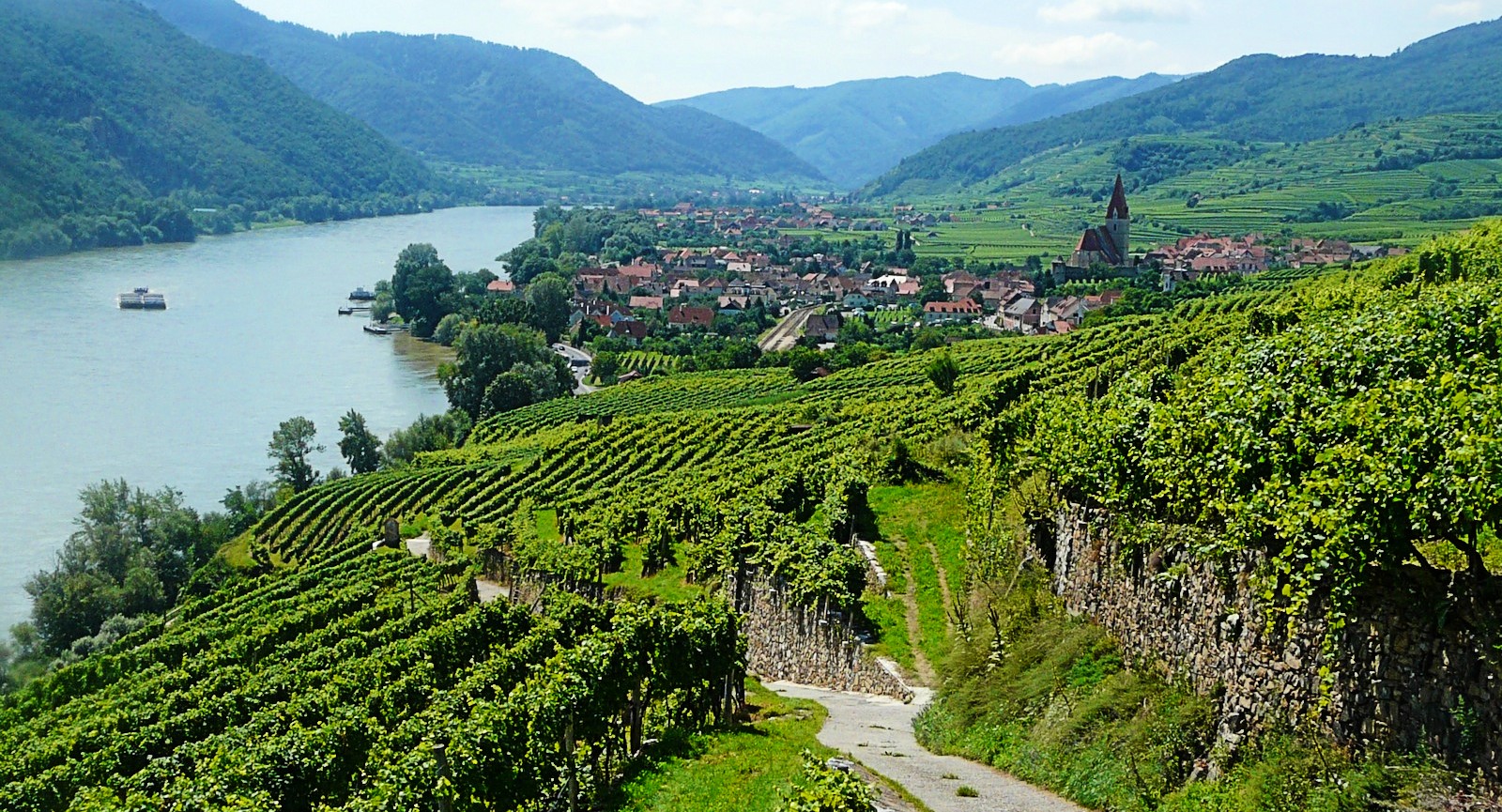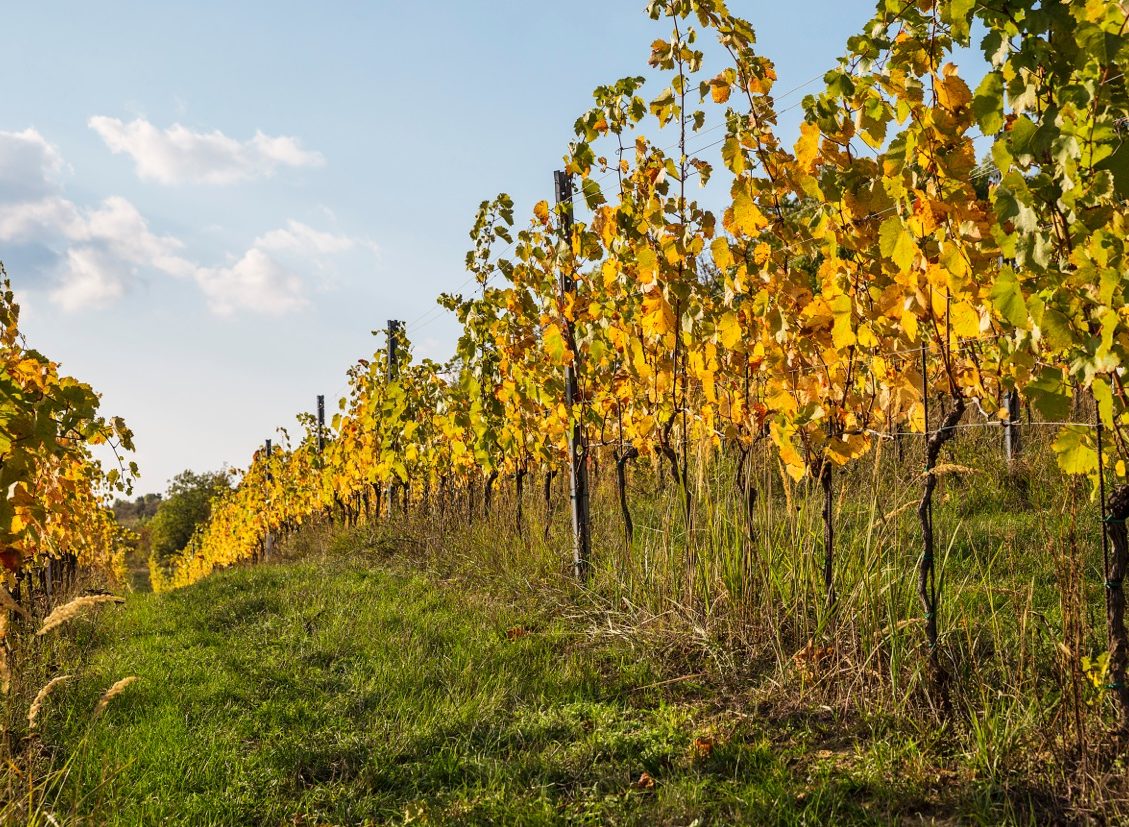
Emmerich Knoll Snr. (left), who made the No. 1 Austrian wine this year, and Franz Hirtzberger Snr. (right), who made the No. 4 wine.
When I left Germany at the end of August to taste the new wines in Austria for JamesSuckling.com, I got a shock that emphasized how different the two nation’s wines can be. Germany was drought-stricken and even mature trees had been browned by the late-summer heat, whereas in Austria the fields, trees and vineyards were all vibrantly green. Austria’s winegrowers were all glad that after three years in a row of very warm and dry growing seasons and early harvests it had flipped back to an old-style vintage and vineyard soils had finally filled with water again. However, they were even happier about the quality of the 2019 vintage wines in their cellar; something they had in common with their German colleagues. The only question when I arrived was just how good those wines are.
The short answer is that the dry white wines that make up the majority of the Alpine nation’s exports are the best since at least 2011. If you focus on the most exciting wines of all, the two dry rieslings from the Wachau I rated 100 points and that took the highest honors in our Top 100 Austria 2020 list – the incredibly elegant and complex Emmerich Knoll Riesling Ried Schütt Smaragd 2019 (No. 1) and the super-concentrated yet poised F.X. Pichler Riesling Unendlich Smaragd 2019 (No.2) – then 2019 is the most exciting vintage since 1999! “For me the Ried Schütt Smaragd comes very close to being an ideal dry riesling,” commented Emmerich Knoll Snr.
- James tasted many of the Austrian wines in this report in the tasting room in James Suckling Wine Central in Hong Kong …
- …including these great rieslings from Rudi Pichler, Fritsch, and Birgit Eichinger, among others.
The Riesling Ried Singerriedel Smaragd 2019 from Franz Hirtzberger also from the Wachau (No. 3) and the Riesling Ried Hochäcker EL 2019 from Proidl in the Kremstal region (No. 4) are also seriously amazing dry whites. So, yes, this year’s Top 100 Austria is a riesling dominated list.
Quite possibly you’re now asking yourself: “What about gruner veltliner, aka grooner?” Austria’s spicy signature grape for dry white wines was the nation’s biggest asset in the export markets for the last 20 years, because although some cheap dry whites from this grape are exported from Eastern European countries higher up the price and quality scale, Austria has few competitors. On top of that, until recently most of the nation’s winemakers regarded gruner veltliner as a robust vine that would take climate change in its stride. However, the last three vintages showed this assumption was too optimistic.

The view over the Danube and the Wachau from the road that divides the famous Klaus (left) and Achleiten (right) vineyards of Weissenkirchen.
We were quite often disappointed by the Austrian gruner veltliners of the 2017 and 2018 vintages, because the less successful examples tasted not only alcoholic and flabby, but also lacked the distinctive peppery aroma of the grape. This is because the aroma substance responsible for this character (rotundone) is temperature sensitive and the warmer it is during the weeks before the harvest the more quickly it breaks down in the grapes. The problem is this is accompanied by lower acidity and higher sugar content in the grapes, leading to high alcohol wines without the acidity and aroma needed to carry this. Sadly, although the second half of the 2019 summer was cooler than those of 2017 and 2018, some 2019 grooners showed these problems: not an encouraging sign for the future.
The highest placed gruner veltliners – Prager’s Zwerithaler Kammergut Smaragd 2019 (No. 5) from the Wachau, Hirsch’s Ried Gaisberg EL from the Kamptal (No. 6) and Ott’s Tausend Rosen 2018 from the Wagram (No. 10) – stood out because of their finesse and aromatic complexity. They also had the lively, but not dominant acidity we expect from high-end gruner veltliners. But scan the Top 100 and you will see we didn’t find many such Danube Valley masterpieces from this grape. Quo vadis grooner?
“Riesling is much more robust in heat waves,” commented Dr. Berthold Salomon of the Salomon-Undhof estate in the Kremstal region. “Some changes, most importantly a shorter canopy, will be necessary in order to keep gruner veltliner in many of the best sites, but for the very warmest vineyard locations we need to find an alternative.” Salomon produced extremely consistent wines and his Riesling Ried Steiner Kögl EL 2019 placed No. 16. It is a beautiful example of how the best Austrian dry rieslings combine a peachy juiciness with some power and a mineral freshness, qualities that made them a hit with somms right around Planet Wine.

Lucas & Johanna Pichler of FX Pichler, who created the perfect 100-point Riesling Wachau Ried Unendlich 2019, that was our No. 2 wine this year.
The other big news this year that’s prominently reflected in the Top 100 Austria is that the red blaufrankisch grape (also known as kekfrankos in Hungary and Lemberger in Germany) also copes extremely well with the new climatic situation, particularly in the Burgenland region. The refined Lutzmannsburg Alte Reben 2017 from Moric (No. 7) and the much more powerful and earthy Reihburg R2 2015 from Schiefer (No. 8) show that blaufrankisch is capable of greatness in widely contrasting styles in the Burgenland region. The way that Dorli Muhr’s Spitzerberg EL 2018 (No. 11) glides over the palate proves that blaufrankisch can also rise to greatness in the small Carnuntum region in the Danube Valley.
Another grape that’s quite widely planted in Austria and that we think has a great future is chardonnay. For many years Austrian winemakers were pushing chardonnay together with their traditional style of winemaking for gruner veltliner (with no malolactic fermentation and the emphasis on retaining freshness), which didn’t work out so well. Just how exciting Austrian chardonnay can be if the winemaking takes its cue from Burgundy is shown by the beautifully crafted and very complex Chardonnay Tiglat 2018 from Velich in Burgenland (No. 9).

Dorli Muhr’s Spitzerberg vineyards.
Producers focused on dry whites and reds may prefer dry harvest conditions, but these don’t help winemakers focused on dessert wines from botrytized grapes, as is the case for some top producers around the Neusiedlersee lake on the border with Hungary in Burgenland. It was no surprise that a wine from Kracher, the Welschriesling Trockenbeerenauslese Nummer 5 2017 (No. 62) was the highest placed example of this style. We look forward to tasting what the very different, moist and cool conditions of the 2020 growing season and harvest in Austria made possible.
– Stuart Pigott, contributing editor



